The Pink Economy: Why content marketing is worth it & how to do it well?
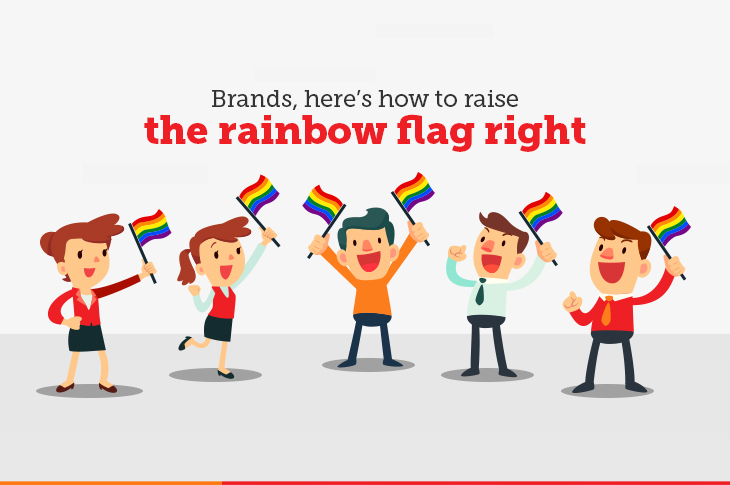
As a marketer, you’re always looking for segments of the market that you may have not yet tapped into or ways to better communicate with different target audiences. But have you ever thought it possible that there is this large community of over 100 million people that barely any brand is speaking to – or even acknowledging? We are talking of a community where people aren’t financially bogged down by conventional obligations like funding their children’s education or even traditional marriage.* A community where, usually, both individuals in a couple are gainfully employed. A community which, because of all these reasons, has a high disposable income and the liberty to spend money as they see fit. No, this isn’t fiction. Such a community does, in fact, exist, and you, as a brand, stand to gain if you choose to reach out to them. It’s the LGBTQ+ community.
*The LGBTQ+ community does not yet have the civil rights to get married in India, as the fight for same-sex marriage and other essential rights are ongoing.
The Pink Economy
The LGBTQ+ community in India is a marginalised group that, till date, is continuing to fight hard to have their voices heard and be accepted. The September 2018, Section 377 ruling of the Supreme Court may have decriminalised homosexuality in the country, but the journey to get civil rights has just begun.
In such a scenario, if there is a brand out there that is vocal about its support for the community, and actions it in simple yet meaningful ways, that brand stands to gain business and customer loyalty from three ends:
- The LGBTQ+ community
- Allies of the LGBTQ+ community and those who want to be associated with diverse and inclusive brands
- People who are still closeted
If you’re wondering how much of business would this really mean, take a second to prepare yourself for the massive number coming up: $3.7 trillion. That’s right, that’s the combined buying power LGBTQ+ adults globally had in 2019, according to a research by LGBT Capital.
Suhail Abbasi, co-founder and chairperson of The Humsafar Trust, an LGBTQ+ organisation founded in 1994, explains why this number is so massive. “There’s a lot of power in the pink dollar. A lot of people in the LGBTQ+ community are single and gainfully employed. They have far more disposable income than the married heterosexual persons, who have financial obligations towards their spouse and children. There are way too many expenses, like school fees, books, clothes, etc. By and large, the people from the LGBTQ+ community don’t have so many financial obligations; hence they can spend on themselves. They shop more, eat out more, entertain more because they can afford to.”
In 2015, three years before homosexuality was decriminalised in India, an estimated 80 million people were out and proud in the country, and they had an estimated annual spending power of $90 billion. Suhail says, “This value is increasing year after year as more and more people are coming out. With time they are getting empowered, they are choosing not to get pressurised into conventional heterosexual matrimonial alliances. They are being more assertive about their rights; they are getting employed. A lot of youth is moving towards larger cities to live more independently.”
How much of this is your brand benefiting from? If the answer is ‘none at all’, it’s still not too late to start. Brands in India are yet to realise the power and presence of the LGBTQ+ community, let alone understand and effectively communicate with them. You can gain from being one of the first brands to leverage this and step out of ignorance and silence. That requires two things: awareness and authenticity.
Get the LGBTQ+ terminology right
The first step in awareness is understanding the appropriate and respectful LGBTQ+ terminology so that when you reach out to the community, you don’t offend them.
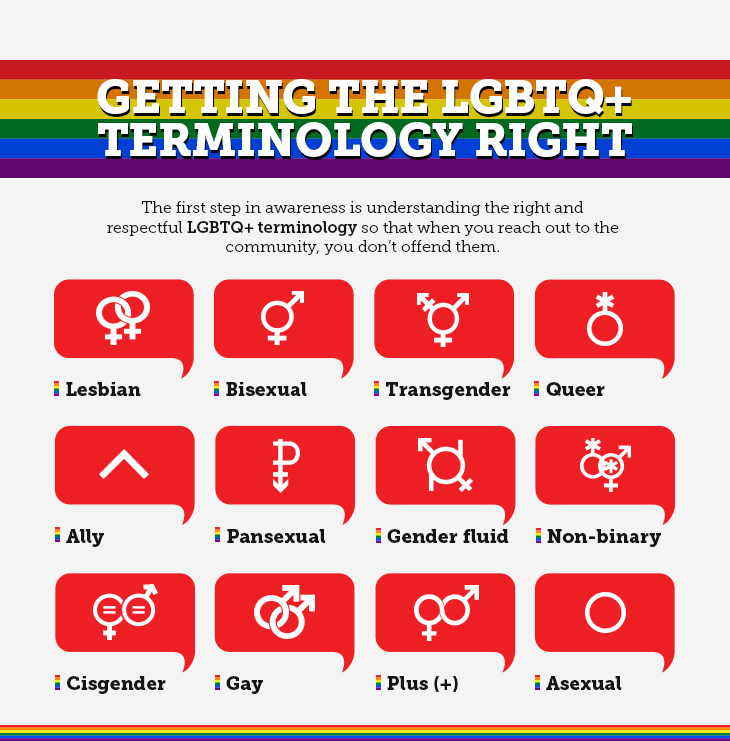
But steer clear of tokenism
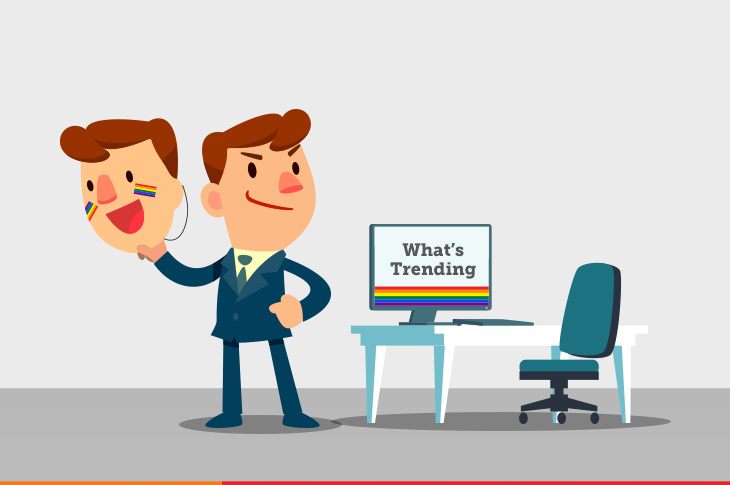
When the 2018 supreme court ruling came out, several brands wanted to be a part of the celebration and voice their support for the LGBTQ+ community. At the time, changing their brand logo to pride colours or putting up a creative on their social media handles was seen in a positive light. In a country with so much ignorance, just being vocal about your support of the community is appreciable. Suhail says, “The LGBTQ+ community faces so much stigma, hostility and discrimination, that any kind of support or acknowledgement is heartening and helpful.”
However, merely doing this year after year can be viewed as a superficial effort or tokenism. Suhail elaborates, “When the Supreme Court read down Section 377, we saw nearly 40 to 50 brands who endorsed the ruling by adding rainbow colours to their logos. While it was reassuring to see this happen, it barely translated into any real change or benefit for us. It was just a token expression, a trend to be followed with no commitment towards the cause or the community.”
When it comes to minority communities such as LGBTQ+, brands are often seen as eager to appeal to them and secure their market share but not effecting any actual change. When brands merely try to tick certain checkboxes when it comes to inclusivity and diversity without actually understanding the experiences of the community or extending any tangible support, this can be viewed as exploitative and ‘rainbow washing’.
For instance, many brands capitalise on International Pride Month in June by releasing rainbow-coloured merchandise or launching special campaigns. Such an effort can be criticised by the community if it is not well-informed or actioned.
For instance, this year during June, Nykaa – the beauty retail giant – featured makeup looks for Pride Month. However, out of all the makeup artists and influencers that they collaborated with for these looks, not one of them belonged to the LGBTQ+ community, says a source. If they had collaborated with one of the many talented and well-known beauty bloggers and influencers from the LGBTQ+ community, this could have enhanced the campaign and their efforts.
Launching a limited-edition product or coming up with a campaign for Pride Month can be well-received by the community and be profitable for your brand if you consider the following things:
- Are any proceeds from such merchandise going towards LGBTQ+ NGOs?
- Are any queer designers and artists involved in the creation of Pride merchandise?
- Are you reaching out to any queer influencers, celebrities, or models to promote Pride merchandise?
- Is your support for the community consistent through your marketing efforts?
If the answer to these questions is no, it’s just rainbow washing and you will want to steer clear of that.
An excellent example of being an LGBTQ+ ally in the right way is Puma. In June 2020, Puma launched a Pride collection ‘From Puma With Love’ in collaboration with Cara Delevingne, an openly pansexual actress and model. Of the proceeds from this collection, 20% will be donated to the Cara Delevingne Foundation, a project of the Giving Back Fund, in support of LGBTQIA+ charities, including GLAAD, The Trevor Project, and MindOut.
Brands that have done a brilliant job
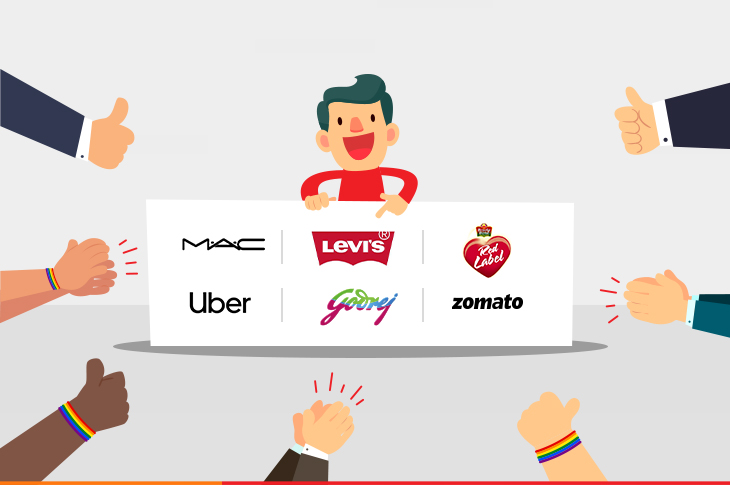
Talking about what a brand can do when it wants to call itself an LGBTQ+ ally, Suhail said, “The effort of the organisation/brand has to be serious and consistent. They can conduct awareness and sensitisation workshops for their staff members. We can assist them with this. They can start D&I (Diversity & Inclusion) chapters in their offices. They can specify that they are an ‘equal opportunity employer’ in their placement ads. They can not only hire people from the LGBTQ+ community but formulate inclusive policies and create a friendly and healthy environment for all sexual identities.”
MAC Cosmetics
Ever since MAC Cosmetics was born in 1984, it has globally been known as a very inclusive brand, right from their inclusive hiring policy, gender-neutral products, and LGBTQ+ friendly branding. In 1994, MAC chose RuPaul, a black drag queen, as the first spokesperson for their Viva Glam campaign. Their Viva Glam lipstick was launched to raise money and awareness for HIV/AIDS, and 100% of the purchase money of all Viva Glam products goes towards the MAC AIDS Fund. Till date, $400 million has been raised exclusively through the Viva Glam lipstick and lipgloss.
In India, too, MAC Cosmetics has extended its support to the LGBTQ+ community, not only talking the talk but walking the walk and backing it up with funds. Vivek Anand, CEO of The Humsafar Trust, threw light on MAC Cosmetics’ involvement with the community in an exclusive interview with Scatter. “They worked with us for almost seven years. They invested about Rs 5 crore in The Humsafar Trust in working with the community, in providing services for the community. So, they came in very actively. MAC has a very good image.”
You can check out Scatter’s exclusive video interview with Vivek here for more insights.
Levi’s India
Levi’s is another brand that has been consistent with its support, and the communication of it, for the LGBTQ+ community. It also digs deeper to understand the community; hence its efforts are often appreciated as authentic. For instance, in 2019, the brand released an ad campaign #ProudToBeMore. It featured inspiring members of the community such as Onir, Sushant Divgikar, Priyanka Paul, and Aravani Art Project and relayed the message that people from the community are more than just their sexuality.
Levi’s India has also aimed at getting conversations around the LGBTQ+ issues started in a variety of ways. “Levi’s has actually done a lot. They provided a platform for the community to come together and they did podcasts and shows,” says Vivek. “They also did this campaign where they called in senior members of the LGBTQ+ community and gave them their branded clothes,” he added, to focus on the fact that people of all ages can be fashionable.
Brooke Bond Red Label
Red Label has been vocal about its support for the LGBTQ+ community for years. Vivek talks about a recent ad that not only managed to show its support for the community in a very heartfelt manner but was also successfully able to promote its product. “They did this beautiful ad with a transwoman named Malani. It’s a very nice ad, very touching,” says Vivek.
The ad aimed to show that the stereotypes we have about the community may not always be due to homophobia but ignorance. There’s also a misconception that people from the older generation are against the community. Prince Manvendra Singh Gohil, the first openly gay prince in the world, shares his coming out story and busts this myth, in an exclusive interview with Scatter.
“There are people from the older generations who are extremely supportive. The day I came out on 14 March 2006, everyone in my town opposed me because they thought I brought shame and humiliation, except one association. This was the senior citizens’ association of my town, Rajpipla. They sent me a postcard saying that they want to honour me. I was quite surprised.
The president of that association was 90 years old at that time and he said, ‘We want to honour you for what you’ve done. We are not honouring you because you came out as gay but because you spoke your truth.’ They called me and presented me with a shawl. They were all 70 and 80 plus in age; they were all from the older generation. They were so supportive, the members of that association actually helped me reach out to other members of the community who were old, rigid, conservative and who were not willing to open their minds and support and understand us.”
You can check out Scatter’s exclusive video interview with Prince Manvendra Singh Gohil here for more insights.
In 2016, Red Label collaborated with Y-Films and GroupM and launched India’s first transgender band – The Brooke Bond Red Label 6 Pack Band. This band performed a cover of Pharrell Williams’ song ‘Happy’, which quickly went viral. This musical act won the Cannes Grand Prix Glass Lion, an award that ‘celebrates culture-shifting creativity.’ The brand said this is an effort in furthering its belief to make the world a more welcoming place by diffusing socially awkward situations and bringing everyone closer by breaking barriers over a cup of tea.
Uber
Another brand that has been actively supportive of the community is Uber, says Vivek. “Uber has generally been making announcements that they are LGBTQ+ friendly. They have also done an ad for the same. In terms of their hiring, they have made it rather clear that they are open to the idea of hiring LGBTQ+ community people. Their workplace policy is on the lines of everybody is equal.”
Uber believes in ‘an inclusive workplace that reflects the diversity of its employees and the communities it serves.’ In 2019, Uber partnered with RISE, India’s first LGBTQ+ job fair. Globally too, Uber has a program called ‘Pride at Uber’ to promote LGBTQ+ inclusion, allyship, and diversity. It is a good example of a brand that not only raises the pride flag in its marketing efforts but also backs it up with necessary action. It does turn the routes in its maps to rainbow flag colours during pride months and parades, but its support extends beyond that gesture.
Godrej
Godrej is one of few Indian brands that supported the LGBTQ+ community way before brands even thought about it. Godrej’s India Culture Lab was established in 2011 to serve as a platform to act as a ‘catalyst to challenge existing notions of culture and encourages dialogue and experimentation through innovative programming.’ One of its central focus is on LGBTQ+ issues. Over the years, it has had several events, including talks and discussions with well-known personalities from the community, LGBTQ+ Youth Leadership Summits, and dance competitions. The India Culture Lab is headed by Parmesh Shahani, a well-known gay activist and author of the book ‘Gay Bombay.’
In addition to its efforts at the Culture Lab, Godrej has an inclusive hiring policy. The brand emphasises on a safe workplace for all, where opportunities and benefits are based on skill and talent. Godrej is one of a handful of Indian companies that allows its employees to register their same-sex partner for healthcare benefits. This is also an economically smart move because, as per a report by the World Bank, India loses an estimated $31 billion per year due to homophobia. This is in terms of loss of labour productivity and the added healthcare cost to the LGBTQ+ people who are stressed, suicidal, poor, or HIV-positive.
Zomato
Apart from an inclusive hiring policy, ad campaigns supportive of the community, and launching limited edition products during Pride month, there are other things you, as a brand, can do to be an LGBTQ+ ally. Zomato is an excellent example of paying attention to the little things that matter a lot. In 2019, Zomato launched a new tag on its app for restaurants in addition to standard tags such as indoor seating, kid-friendly, vegan options, etc. This is the ‘LGBTQIA Friendly’ tag, which was launched after the brand was made aware that some of its users felt unwelcome at certain restaurants due to their sexual orientation.
Zomato, on its blog, also mentioned that it would ‘actively engage with restaurateurs to help sensitise them to how some current and potential customers feel about their practices, and also educate them about the significance of having an ‘LGBTQIA Friendly’ tag on their Zomato pages.’
The power of this close-knit community
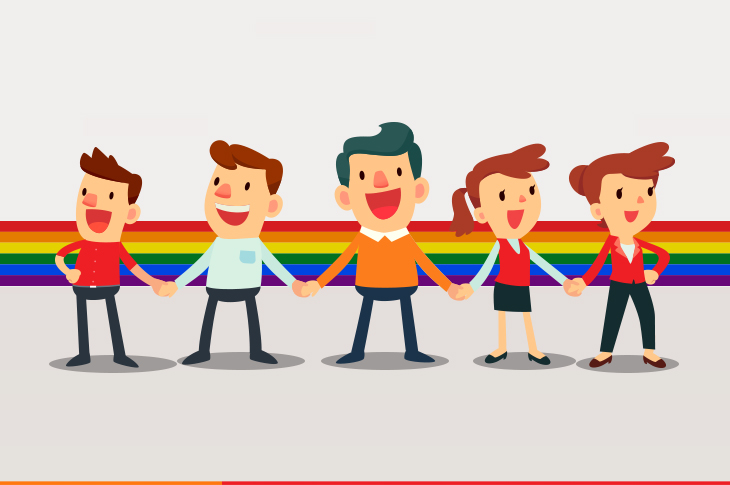
The LGBTQ+ community is close-knit and well-connected. This means if one of its members experiences discrimination of any kind when interacting with a brand, either as a customer or as an employee, the news spreads throughout the community fairly quickly. Since the community is a marginalised group, they take such experiences seriously and go ahead and boycott the brand.
Patanjali
Prince Manvendra sheds light on the negative impact of not supporting the community by using the example of the brand Patanjali.
“There have been certain brands that have been boycotted by the LGBTQ+ community because their policies are such that they have shown homophobia. A very simple example of that is Patanjali. Now we all know that Patanjali is a brand by Baba Ramdev. When we won the Delhi High Court judgment, it was Baba Ramdev who ganged up against us and got other religious and spiritual leaders involved and said, ‘Homosexuality is a mental disorder and should be challenged. How can you give them rights?”
Baba Ramdev took a proactive stand that homosexuality is unnatural and all homosexuals should be sent to him for treatment, and he will cure them. He may have thought that’s one way he’s promoting his business, but it was distasteful and downright homophobic. And from a purely brand perspective, Patanjali has lost out on a lot of customers.
“Because he has openly shown that he is homophobic, the entire LGBTQ+ community has boycotted Patanjali products. Even if I go to a supermarket, I won’t touch Patanjali. I’d rather buy Amul or some other brand, because we don’t want to encourage such brands,” says Prince Manvendra.
He goes on to explain how the community may be small in numbers but is impactful nonetheless. “We may be a minority; maybe 5 percent, 10 percent of the population, but we have a robust network in India. So, if one person gets affected, the whole community in India will get affected. We see that the entire community boycotts that brand because they have openly shown homophobia, and we will not support that brand.”
“One good thing we have in India is that we have a registered network, INFOSEM (Integrated Network for Sexual Minorities). So, if any such incident occurs in India, it immediately comes to the notice of INFOSEM. And INFOSEM is a registered society, which consists of more than 160 organisations working all over the country and in almost all the states, working exclusively for the sexual minorities’ community. We all unite and fight it out.”
“Even when it came to Patanjali, for that matter, INFOSEM took up the issue. One organisation, on an average, has 4000 to 5000 members; so you can imagine how many people 160 organisations would mean. And that’s just the members, not the people we reach out to. My organisation, Lakshya Trust, has a reach of almost 25,000 people, in just the state of Gujarat. If we unitedly boycott any brand, it can have a huge impact on it.”
He goes on to elaborate on how it’s not just the LGBTQ+ community but also their loved ones, including friends and family, who boycott such brands when informed about their homophobic stance.
Kingfisher
Another brand that faced this form of backlash is Kingfisher, reveals Vivek. “Vijay Mallya had made some very masochistic, homophobic comments such as they are not man enough, women are not women enough, and the women need to see real men and men need to meet real women. You are promoting something very, very wrong.”
Vivek goes on to explain that such statements can have dire consequences that threaten the basic safety of the LGBTQ+ community. “Corrective rape is one of the biggest crimes committed across the world. You do not rape a gay man so that he becomes straight. Lesbian women being raped so that they become straight because they haven’t experienced a real man. And Vijay Mallya’s statements amounted to that.”
When asked if he would drink a Kingfisher beer, Vivek says, “No. Not me, nor anybody else around me. I don’t know anyone who drinks Kingfisher beer. There are serious issues with Kingfisher. There were serious issues with Vijay Mallya. First of all, you have no business to look into my bedroom, and then you have no business passing these homophobic comments. Don’t try to prove your masculinity to us.”
Explaining why such brands get boycotted, Vivek says, “The LGBTQ+ movement in India, in the world, has reached such a point that what the community says matters. If the community says, ‘No, we’re going to boycott this product,’ it spreads like wildfire. You know today, at the click of my social media handle, I can reach out to over 10 lakh people.”
Vivek, however, clarifies that the community doesn’t want to threaten or scare anyone. They just want to be treated like everybody else. “I do not want to scare anyone. Don’t look at the community as someone who’s threatening you. There is a plea for understanding that you are dealing with human beings. Be more respectful. There are certain things that are non-negotiable. And that’s why these extreme steps happen. You know, in my life, I have faced a lot of ignorance, but I haven’t faced so much of homophobia. Such statements are non-negotiable.”
So, what should brands keep in mind when communicating?
Now that you have some context and a solid motive for reaching out to the LGBTQ+ community, here are some crucial points to keep in mind.
1. Understand the community’s pain points
Just as with all other target markets, you need to first get a clear understanding of what it is that the LGBTQ+ community struggles with and how your product or service can help them. It doesn’t even have to be a launch of a limited-edition rainbow product or something entirely different from what you’re doing right now.
For instance, transgender people often struggle with their gender identity and the name they were assigned at birth that doesn’t match it. Starbucks UK understood this struggle. They launched a heart-warming ad where a transgender teen finally gets to experiment with their new name (James) instead of being forced to use the name they were assigned at birth (Jemma). By releasing this ad, they also communicated the message that they welcome every person, whoever they are and whoever they want to be. This ad, therefore, marked Starbucks as a safe space that celebrates trans people.
2. Be aware of heteronormativity
Heteronormativity is the belief that heterosexuality is the default or normal sexual orientation. It’s assuming that every person you come across is straight or that sexual and marital relationships are always between people of the opposite sex. Prince Manvendra says, “Whenever you hear something, you hear the heterosexual side of it, which has become the norm. Of course, that’s the majority – I don’t deny that – but you can represent everybody.” Due to societal conventions and gender stereotypes, heteronormativity is deep-rooted. But as a brand, you have to make an intentional effort to steer clear of it.
In January 2020, Tinder India launched an ad campaign called ‘swipe stories’ where it portrayed real-life Meet-Cutes submitted by its users on the Tinder platform. These swipe stories refreshingly featured lesbian and gay dates, thereby rejecting heteronormativity. Prince Manvendra shares another example of beating heteronormativity, “Some condom brands have done this and now even the government has started doing this for Nirodh – a government-owned condom. The brand has even started breaking the stereotypes by featuring men and men together on condom ads. Even I am on a condom ad for the brand. So that’s how I think you’re able to get your point out and reach out to the masses by showing open, positive support.”
3. When in doubt, use gender-neutral pronouns
She/he and his/her pronouns are okay to use if you know what the person you’re interacting with identifies as. But in case you are unaware of the person’s gender identity, it’s best to use gender-neutral pronouns – they/them. This is applicable for all points of contact with your customers and potential customers, from email marketing to in-person sales. This is why diversity and sensitivity training to all your employees is essential.
Gender neutrality extends beyond language, and you can also embrace it in designing your products and services, depending on which industry you’re in. This can especially work in your favour if you’re targeting the younger generations, such as Gen Z and Millennials, who place little importance on gender roles. In 2019, Mattel launched a new range of dolls called Creatable World to keep labels out and be more inclusive. Each of the dolls comes with gender-neutral clothes and features and wigs with short hair and long hair so that the kids can choose to create their own characters free of societal bias. It was a welcome change for millennial parents who wish to raise their children in a less gender-biased world.
4. Get the community involved
As a brand, you don’t have to come out with specific ad campaigns to promote LGBTQ+ issues or launch a special line of products with rainbow colours. One great way to support the community is by getting them involved – not because of their sexual orientation but because of their talent.
Prince Manvendra says, “A lot of us are talented in so many respects. Why should that talent be left out just because we belong to a certain minority community? You’re missing out on the talent of a person. So, I think by giving opportunities to us, they are opening their own resources and having more creativity. I think I would not be wrong in saying that we are some of the most creative people in the world. Imagine a world without us. We are very colourful people. Just look at any industry – fashion, makeup, dance, choreography; its full of us, you know.”
He goes on to explain that using a well-known personality from the community as a brand ambassador or to promote a social cause other than LGBTQ+ issues, such as road safety, will automatically show the support for the community because you’re getting them involved.
When to communicate with the community
If you think that the only opportunity in your editorial calendar for LGBTQ+ marketing efforts are the Pride Months of January and June, you will be pleasantly surprised by this!
LGBTQ+ Editorial Calendar
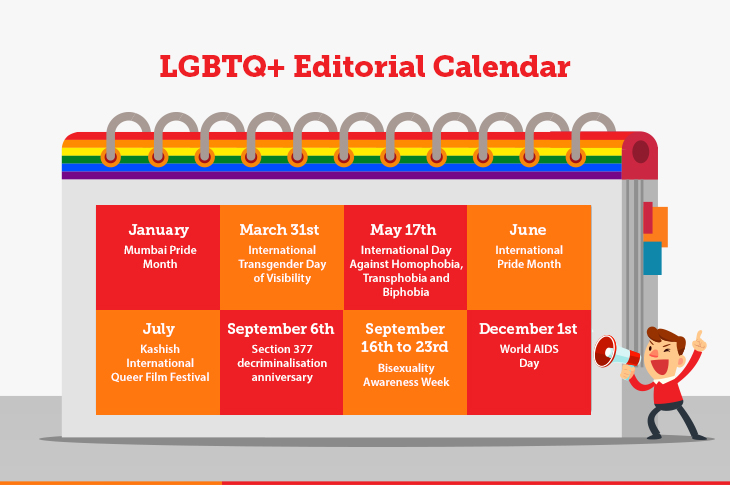
Last words
At Scatter, we believe in a world that effectively understands that love is love. If you are a brand that believes in the same and wants to communicate this support to the LGBTQ+ community in a way that is effective, genuine, and actionable, we can help you with that.
Our content experts understand the LGBTQ+ audience as well as your brand requirements very well. We use these inputs and our experience to draw an interesting content strategy that ties into your larger marketing objectives.
With the combined efforts of our experts, subject specialists, and publishers of repute, your brand gets to tell fantastic stories and up the ante on your marketing efforts.
References:
https://www.entrepreneur.com/article/334983
http://www.lgbt-capital.com/docs/Estimated_LGBT-GDP_%28table%29_-_July_2015.pdf
https://www.maccosmetics.in/viva-glam-mac-aids-fund
Make managing content easier with Scatter Content Box! Designed with cutting edge technology, our purpose-built platform for marketers can make digital asset management seamless, maximizes collaboration between teams and enhances productivity. Ask for a demo to learn more.
